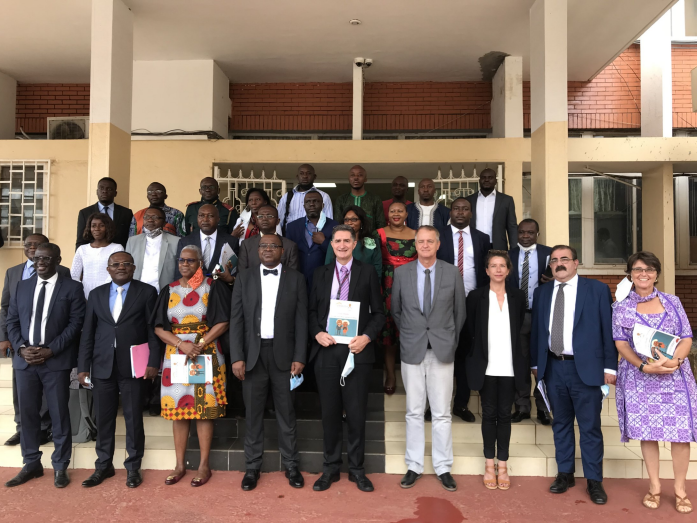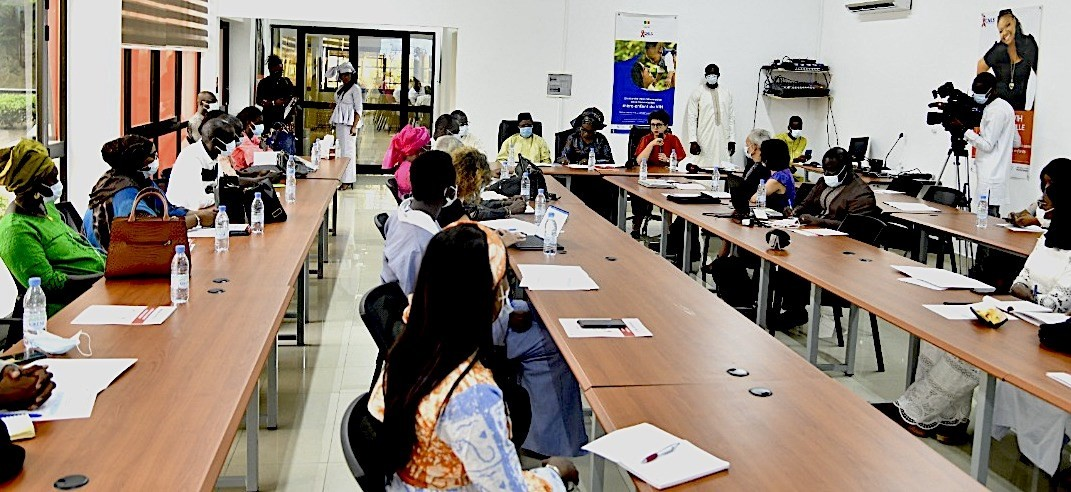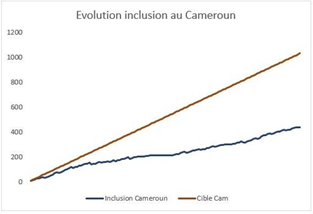The project has been running since October 2020, with clinical activities starting in June and August 2021 in Cameroon and Senegal respectively. As far as community activities are concerned, although they have not yet started, those in charge of community mobilisation have worked to identify new associations in addition to those already involved in the fight against HIV. These will be introduced as the project progresses. Nevertheless, we're starting our 'chronicle' in the second year, which should see us hit full speed ahead with the planned activities.
During the months of October and November 2021, we spared no effort to ensure that the project ran smoothly. In fact, we're delighted to announce that the project has been officially launched in the 2 countries over the last few months.
VIHEILLIR IN CAMEROON

The ceremony to launch the VIHeillir project in Cameroon was held on 14 October 2021 under the chairmanship of the Secretary General of the Ministry of Public Health (MINSANTE) of Cameroon. It was an opportunity to present the project to the fifty or so participants from the Cameroonian government, partners and the twenty or so media who came to take part in the event.
After the introductory words aimed at highlighting the project, the Secretary General of MINSANTE officially launched the project in Cameroon during a speech in which he declared "the elderly are among the most disadvantaged social groups. This segment of the population suffers from increased vulnerability, the frequency of certain diseases and reduced cognitive capacity". The HIVeillir project in Cameroon is therefore a solution to this situation, which affects society and whose neglect could have a negative impact on the future of Africa.
VIHEILLIR IN SENEGAL

The official launch of the VIHeillir project took place on Friday 19 November 2021 at the CNLS under the chairmanship of Dr Safiatou THIAM, Executive Secretary of the CNLS, and in the presence of Pr Cheikh TIDIANE NDOUR, Director of the DLSI, Caroline COMITI, representative of the French Embassy, Dr Karim DIOP, Secretary General of the CRCF, Pr Bara NDIAYE, Vice-Dean of the Faculty of Medicine at UCAD, Dr Bernard TAVERNE, North Coordinator of the ANRS site, Pr Mamadou COUMÉ, geriatrician and coordinator of the VIHeillir project in Senegal. Also present were the Agence Nationale de la Couverture Maladie Universelle (ANACMU), NGOs such as Enda-Sénégal, staff from the project sites (HMO, CTA, CRCF), the associations that took part in the training and the project team. The event was covered by the Senegalese press.
During the ceremony, Professor Mamadou Coume spoke about the issues surrounding ageing and the challenges to be met. The VIHeillir and Grand Age projects were presented by Dr El Hadji BARA DIOP (project leader) and Dr Bernard Taverne respectively.
Spot Savoir: a look at the project data
Registration began on 21 June and 9 August 2021 in Cameroon and Senegal respectively. As of 31 November 2021, VIHeillir had 674 PLWHIV, 561 in Cameroon and 113 in Senegal. Inclusions are much slower than expected, as can be seen from these graphs.


Less than half of the expected inclusions were made. This delay is partly explained by the time needed for teams to familiarise themselves with the procedures and the reduced contact between patients and services following the differentiation of care in the community and by psychosocial support workers. The teams have been informed and are working on solutions.
Analysis of the data to the end of September 2021 revealed a number of differences between the sites. In terms of gender distribution, in Cameroon there is an over-representation of women, which does not correspond to the national statistics for active files.
Est-ce que les hommes, bien que enregistrés, restent plus en communauté ? Tant de questions à se poser.
Overall, we received patients whose ages ranged from 50 to 81. The oldest were 81 in Senegal and 79 in Cameroon. The average age of participants was 59 in Cameroon and 62 in Senegal.
Let's talk about fruit and diabetes!!!

Fruit is part of a balanced diet. Like vegetables, it is rich in vitamins, minerals, antioxidants and fibre. A diet rich in vegetables and fruit reduces the risk of heart disease, stroke and certain types of cancer. Conversely, a diet low in vegetables and fruit is one of the main causes of chronic disease.
All fruit, without exception, can be eaten by people with diabetes.
However, some fruits have a higher carbohydrate (sugar) content than others. To help control blood sugar levels, it's important to pay particular attention to the amount of fruit you eat and to spread your portions evenly throughout the day..
For a balanced meal containing an adequate amount of carbohydrates, one portion of fruit is generally sufficient. That said, you can eat several portions of fruit a day - most people need two to four portions a day. Whole fruit, especially when eaten with the skin on, is an interesting source of dietary fibre.
Overall, we received patients whose ages ranged from 50 to 81. The oldest were 81 in Senegal and 79 in Cameroon. The average age of participants was 59 in Cameroon and 62 in Senegal.
| 1 Portion | Fruit |
|---|---|
| 1 whole fruit of medium size | Orange, apple, pear |
| 1/2 larger fruit | Banana, grapefruit, mango |
| 2 dried fruits | Tangerine |
| Dried fruit | 3 dates, 2 tbsp. dried raisons |
It's better to eat fruit with its fibre than to drink its juice. | |
(source Diabète Québec : https://www.diabete.qc.ca/fr/vivre-avec-le-diabete/alimentation/aliments-et-nutriments/les-fruits/ )
Comments